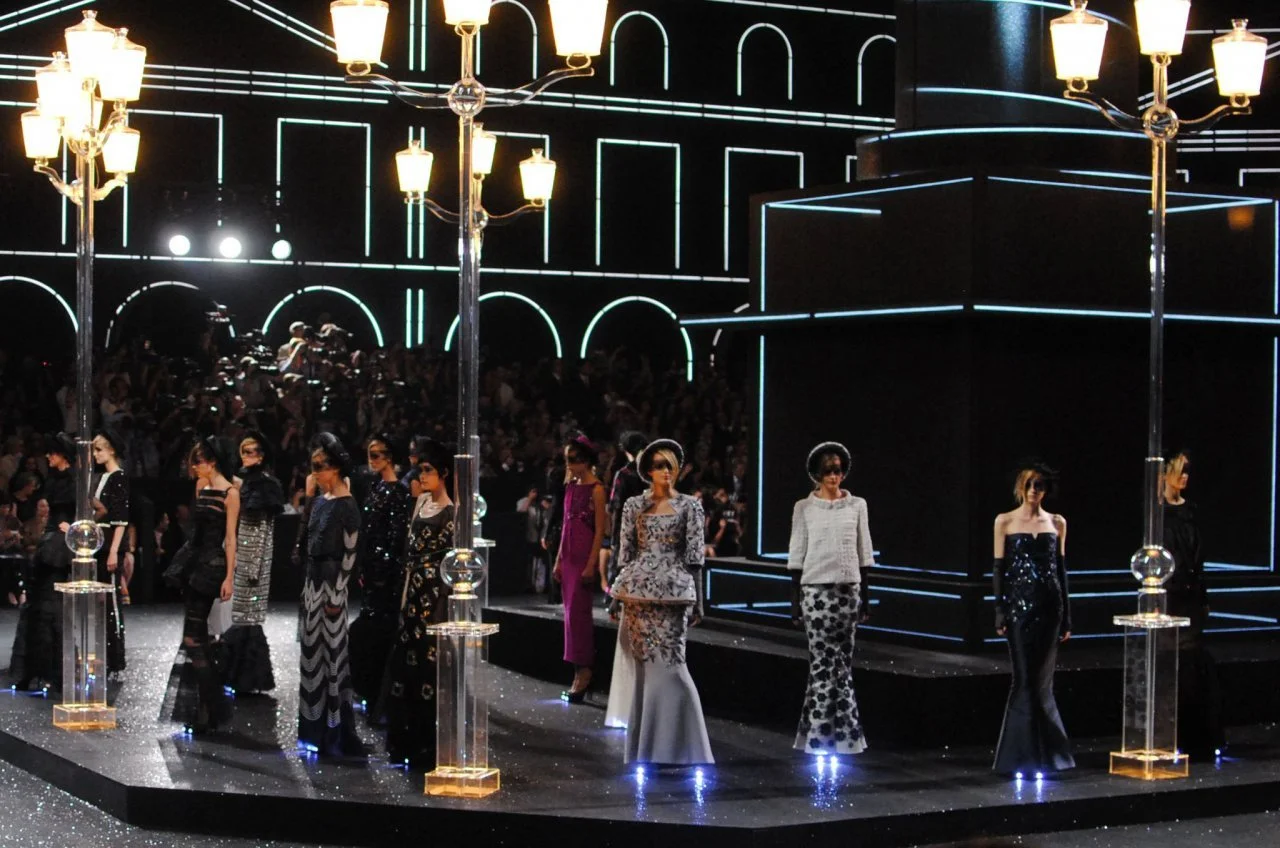Chanel walks Manchester for better or worse
Chanel’s F/W11 Haute Couture fashion show in Paris. Image courtesy of Haute Couture News/Wikimedia Commons
Last month, Chanel showcased their 2023 Métiers d’Art collection at Thomas Street in Manchester’s Northern Quarter. Métiers d’Art shows were launched in 2002 by Karl Lagerfeld, blending haute couture and ready-to-wear designs to celebrate the behind-the-scenes artisans at the maison. It has traditionally been exhibited in foreign locations and was held in Dakar, Senegal last year.
The event marked the first time a luxury fashion house unveiled a new collection using the Manchester streets as its runway; an unprecedented choice considering the city’s penchant for street-style and headquarters for fast fashion brands such as Missguided. However, the decision is not far-fetched, considering Manchester’s thriving creative community and contributions to the cotton and textile industry in the 19th century. Coco Chanel herself was inspired by the tweed jackets that she wore during her stays in Cheshire.
Luxury fashion houses often toe the line between advertising to the masses whilst charging high prices to simultaneously maintain exclusivity and mass brand awareness. This means that extravagant shows are broadcast online to the general public, but attendees are invite-only and clothing and accessories are fixed at luxury price points.
Preparation for Chanel Métiers d'Art show in Manchester. Image courtesy of John B Hewitt/Shutterstock
Chanel’s show in Manchester was a multimillion-pound project that included the construction of a bespoke Perspex roof to cover the outdoor runway and shelter the models, guests and designer goods from rainfall. Whilst Chanel made sure to use local suppliers and experts in the construction of the show’s staging and compensated businesses that were shuttered during its process; Manchester will not be reaping any permanent long-term benefits from the show - there is no longer a manufacturing fashion industry in Britain, so local suppliers simply do not exist anymore.
This is a consequence of Thatcherite policies that deindustrialised and exacerbated the inequalities that 1980s post-industrial North England faced. Industrial powerhouses like Manchester and Liverpool were some cities hardest hit by the changes, and relied on welfare policies and state-issued jobs in its economic recovery. Although Manchester has successfully developed since its deindustrialisation and the openings of Soho House, W Residence and the Sexy Fish restaurant continue drawing in affluent clients, there are rightful concerns about gentrification in the city.
Sarah Jessica Parker wearing the now iconic John Galliano for Christian Dior newspaper dress on Sex and the City. Image courtesy of James Devaney/WireImage
It is not new for luxury houses to be inspired by and exploit the impoverished. John Galliano for Christian Dior was inspired by Paris’ homeless sleepers when designing his iconic spring/summer newspaper print collection in the year 2000. Last S/S24 fashion week, Burberry was criticised for paying TfL to rename Bond Street Station to Burberry Station for privatising (albeit temporarily) and marketing public spaces. Recently, it was also discovered that modelling agencies have been diversifying their portfolios by recruiting people from refugee camps and sending them back after the fashion month is over.
After Chanel’s show, the roof was dismantled by the council due to financial and time constraints on covering liabilities and permissions, despite people’s hopes and Chanel’s offer to keep it permanent. These cases remind us that for many luxury brands and their wealthy clients, the world is a creative playground they can tear apart and reassemble; even if it means disrupting local businesses and excluding the larger community from paying tribute to the very culture they derive shallow inspiration from.
Therein lies the issue: by celebrating Manchester’s historical contributions to fashion without addressing the city’s present reality, Chanel delivers a collection that lacks depth. Staging a grand spectacle that includes the parading of baker boy caps alongside Thatcher-reminiscent powersuits feels superficial and reads as tone-deaf during the UK’s cost of living crisis. Such glamour is simply not the reality for most people in the country, especially considering its rising rate of rough sleepers; with Manchester home to one in 74 people experiencing homelessness.
Vivienne Westwood with the Ethical Fashion Initiative in Kenya. Image courtesy of RetnaWooller/Wikimedia Commons
Whilst it is not a fashion brand’s responsibility to correct the failures of public policy, it is entirely possible to create art that is mindful of its source material. We have seen this with the late Dame Vivienne Westwood’s commitment to protesting through fashion and Sandy Liang’s tributes to her upbringing in New York’s Chinatown. Chanel is capable of this; as exemplified when last year’s Métiers d’Art collection in Senegal was accompanied by long-term initiatives and a public 19M workshop exhibition to begin this month.
Diversity in fashion and working-class history are subjects worthy of inspiration and celebration. However, to borrow and inhabit a cultural space is not a simple business transaction, but a creative process that fashion brands, particularly influential luxury houses, must find a way to always navigate respectfully.
It will be interesting to see whether the fashion show has set a precedent for Manchester’s future as a luxury fashion hotspot. For now, the beauty of Chanel’s 2023 Métiers d’Art collection will be eclipsed by the dichotomy between luxury and reality, and a growing demand for the fashion industry to accommodate these differences.




